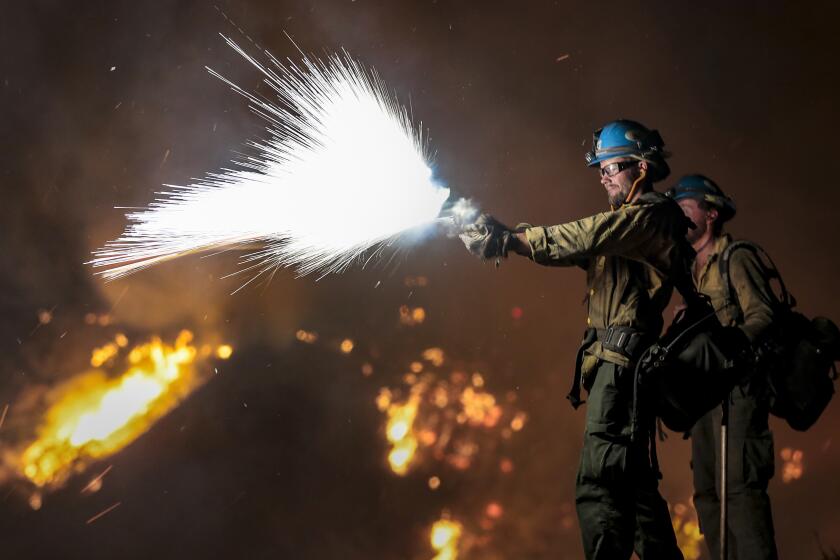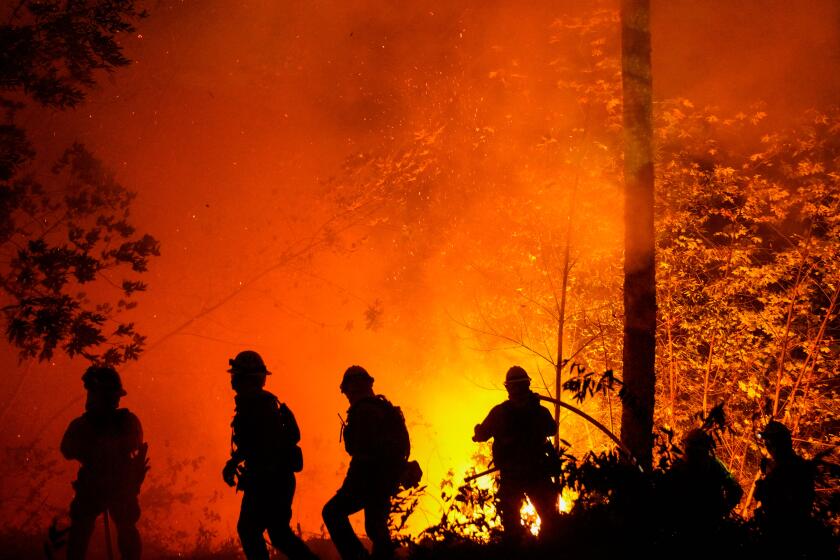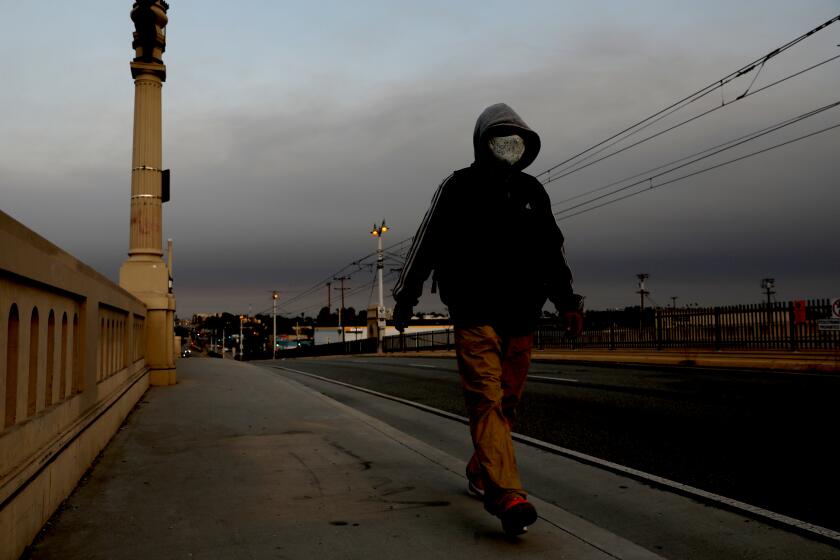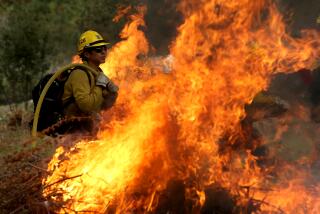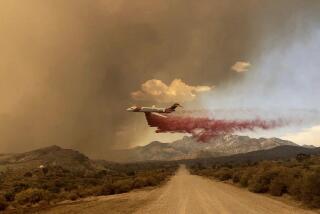California fire season shatters record with more than 4 million acres burned
California’s biggest wildfire season reached a new milestone Sunday, with state officials announcing that the state has now surpassed 4 million acres burned, more than double the state’s previous record.
With crews on the biggest fire of them all, the August Complex, reporting more vigorous activity within the fire’s perimeter Sunday and another warm day ahead of them, “difficult conditions remain,” officials said.
Before this year, 2018 was California’s biggest year for wildfires, with more than 1.8 million acres burned.
The fires this year have burned an area larger than the state of Connecticut and killed 31 people, according to the California Department of Forestry and Fire Protection. More than 100 people died in the 2018 fire season, the majority of them in the Camp fire disaster in Paradise.
Fires this year have destroyed more than 8,200 structures and displaced tens of thousands of people.
Fortunately, the property damage toll has not yet approached that of 2018, when more than 17,000 homes and 700 businesses were destroyed.
Still, the sheer magnitude is staggering. Of the 20 largest wildfires in California’s history, five burned within the space of a couple of months this year, consuming a combined total of nearly 2.4 million acres.
Lightning in August ignited many of California’s biggest blazes, but scientists say climate change has also contributed to the conflagrations. It was the hottest August on record in California, and trees and brush were already abnormally dry and combustible after Northern and Central California saw exceptionally dry conditions last winter.
The August Complex fire, the largest fire in the state’s history, came back to life Saturday night after winds pushed away the smoke and fed oxygen to the flames. Residents in the rural towns of Wildwood and Platina were told to prepare to leave when the fire jumped a containment line Saturday, but the clearer air has also offered an opportunity for firefighters, officials said.
Fears of a significant spread of the Bobcat fire dissipated as Santa Ana winds failed to materialize, but foothill communities remain on high alert.
“On the aircraft side, it’s good because they need the visibility,” said Cal Fire spokeswoman April Newman.
As the week progresses, the weather is expected to work in firefighters’ favor, according to the National Weather Service.
Though winds will continue to push the fire around on hilltops and sour air in the valleys with smoke, the ridge of high pressure that’s been keeping the air warm and dry will be displaced by midweek with cooler, more humid air that will also feed moisture back into the vegetation during the night, according to Sunday’s forecast.
Until then, much of firefighters’ efforts will be focused on the fire’s northern and western zones, where the persistently warm conditions in recent days have pushed the flames over containment lines, up steep hills and into treetops.
On both flanks of the fire, crews challenged by rugged terrain are building contingency lines — a more distant, secondary defensive line away from the fire.
The August Complex fire has burned 985,304 acres and was 51% contained Sunday morning.
Fire officials have reported 100% containment of two other large fire complexes that were sparked by lightning in mid-August — the 396,624-acre SCU Lightning Complex fire in Santa Clara, Alameda and Stanislaus counties, and the 363,220-acre LNU Lightning Complex fire in Napa, Sonoma, Lake, Yolo and Solano counties.
Fire crews on Sunday also reported progress against the Creek fire, burning in the Sierra National Forest, which was 315,413 acres and 62% contained.
The fire’s southern and western flanks, closest to large population centers, have been tamped down, but the fire’s eastern edge flared up overnight and jumped a bulldozed containment line, the fire’s operations commander, Don Fregulia, said in a morning update.
The North Complex fire, which killed 15 people after it raced into the towns of Berry Creek and Feather Falls, was 317,459 acres and 83% contained Sunday.
In the Los Angeles area, crews fighting the Bobcat fire in the Angeles National Forest said they were mostly focusing on mopping up and strengthening containment lines Sunday. Fire officials said a 300-acre internal island of unburned fuel northeast of Mt. Wilson burned Saturday, producing a smoke plume.
The fire has burned 115,548 acres, was 84% contained and has destroyed 87 homes and 83 other structures as of Sunday, though that number could rise as teams continue to perform damage assessments, officials said.
The fire continued to wreak havoc on the region’s air quality, with officials forecasting it would be unhealthy through the weekend for those in parts of the San Gabriel and San Fernando valleys, as well as the San Gabriel Mountains, and unhealthy for sensitive people in many other places in Los Angeles County.
Those with heart disease, asthma or other respiratory conditions were advised to limit outdoor activities, the county Department of Public Health said in a news release.
Conditions around the fire are expected to cool later in the week, said National Weather Service meteorologist David Gomberg. Though cooler air has an obvious benefit for the crews outside, it also can limit the fire’s potential behavior, Gomberg said.
When there’s a large fire on a day with little wind, rising hot air can play an outsize role in influencing what the fire does, experts say. The hot air and rising smoke can become so powerful that they overcome outside influences and control the fire’s weather, making it more extreme and unpredictable as a plume-dominated fire.
With temperatures dropping into the 80s at the highest elevations and 90s in the foothills by midweek, that plume-dominated fire potential is expected to decrease, Gomberg said.
“The hotter it is, the worse it can be,” he said. “You still have some potential for some plume development, but it won’t be as severe as what we’ve seen the past couple of weeks.”
The air around Southern California feels like smoke soup because of wildfires. What does that mean for your health and daily routines?
More to Read
Start your day right
Sign up for Essential California for news, features and recommendations from the L.A. Times and beyond in your inbox six days a week.
You may occasionally receive promotional content from the Los Angeles Times.
